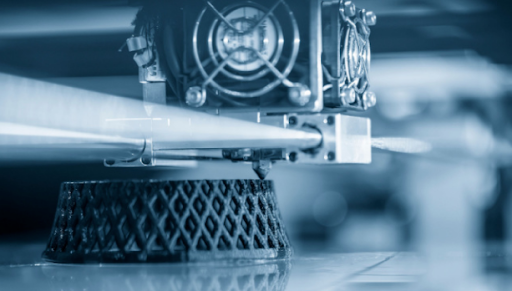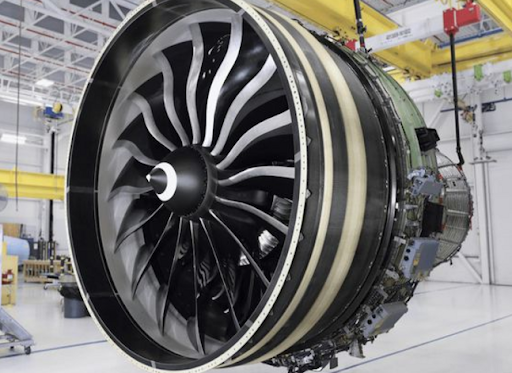 The aerospace industry has always been at the forefront of adopting cutting-edge technologies to improve performance, reduce costs, and enhance efficiency. One of the most transformative technologies in recent years is 3D printing, also known as additive manufacturing. This technology has revolutionized the way aerospace components are designed, prototyped, and manufactured, enabling unprecedented levels of customization and complexity. This article delves into the journey of 3D printing in aerospace, from its initial use in prototyping to its current role in producing production-grade parts.
The aerospace industry has always been at the forefront of adopting cutting-edge technologies to improve performance, reduce costs, and enhance efficiency. One of the most transformative technologies in recent years is 3D printing, also known as additive manufacturing. This technology has revolutionized the way aerospace components are designed, prototyped, and manufactured, enabling unprecedented levels of customization and complexity. This article delves into the journey of 3D printing in aerospace, from its initial use in prototyping to its current role in producing production-grade parts.
The Evolution of 3D Printing in Aerospace
3D printing was initially embraced by the aerospace industry for rapid prototyping. Traditional manufacturing methods like machining and casting are time-consuming and expensive, especially for creating complex geometries and custom parts. 3D printing offered a faster, more cost-effective solution for producing prototypes, allowing engineers to quickly iterate designs and test fit, form, and function.
Early adopters like NASA and Boeing used 3D printing to create models and functional prototypes. This phase primarily involved the use of plastics and polymers due to their ease of printing and low cost. These prototypes were used to validate designs, conduct wind tunnel tests, and demonstrate concepts without the need for expensive tooling.
Process Improvements
Innovations in 3D printing processes have enhanced the production of high-quality, reliable parts. Notable processes include:
- Selective Laser Melting (SLM): A powder bed fusion process that uses a high-power laser to fuse metal powders into solid parts.
- Electron Beam Melting (EBM): Similar to SLM but uses an electron beam, offering benefits such as lower residual stress.
- Fused Deposition Modeling (FDM): A process that extrudes thermoplastic filaments to build parts layer by layer, commonly used for non-critical components.
Benefits of 3D Printing in Aerospace
3D printing offers several key advantages over traditional manufacturing methods, particularly in the demanding aerospace sector.
Design Freedom and Complexity
3D printing allows engineers to design parts with complex geometries that would be impossible or cost-prohibitive to produce using traditional manufacturing methods. This design freedom enables the creation of lightweight, optimized structures with improved performance characteristics.
Weight Reduction
The ability to consolidate multiple parts into a single 3D-printed component reduces weight and simplifies assembly. Weight reduction is a critical factor in aerospace, as it directly impacts fuel efficiency and payload capacity.
Cost and Time Savings
3D printing reduces the need for tooling and minimizes material waste, leading to significant cost savings. The rapid production capabilities of 3D printing also shorten lead times, allowing for faster development cycles and quicker time-to-market.
Customization and On-Demand Manufacturing
3D printing enables the production of custom parts tailored to specific requirements. This capability is particularly valuable for producing replacement parts for aging aircraft, where traditional manufacturing methods may no longer be feasible. On-demand manufacturing reduces the need for large inventories and enables just-in-time production.

Materials Used in Aerospace 3D Printing
The choice of materials is critical in aerospace applications due to the stringent performance and safety requirements. 3D printing technologies have evolved to accommodate a wide range of high-performance materials.
Metals:
- Titanium: Known for its strength-to-weight ratio and resistance to corrosion, titanium is used for critical structural components.
- Aluminum: Lightweight and cost-effective, aluminum is ideal for non-critical parts and structures.
- Inconel: A nickel-chromium superalloy, Inconel is used in high-temperature environments such as engine components.
Plastics:
- PEEK: Polyether ether ketone is a high-performance thermoplastic with excellent mechanical and thermal properties, used for components requiring high strength and resistance to extreme conditions.
- ULTEM: Known for its high thermal resistance and strength, ULTEM is used for electrical and structural applications.
- PLA: PLA, or Polylactic Acid, is a biodegradable thermoplastic derived from renewable resources such as corn starch or sugarcane. When using PLA for 3D printing, optimizing PLA speed settings is crucial to achieving desired print quality and efficiency.
Composites:
Carbon Fiber Reinforced Polymers (CFRP): These materials offer a combination of high strength and low weight, making them ideal for structural applications.
Alternative Solutions for 3D Printing
While 3D printing, or additive manufacturing, has revolutionized various industries with its ability to create complex and customized parts, it is not always the ideal solution for every application. Depending on the requirements such as cost, material properties, production volume, and part complexity, other manufacturing technologies might offer better alternatives.
CNC Machining
CNC (Computer Numerical Control) machining involves the use of computer-controlled tools to remove material from a solid block to create a desired shape. This method is known for its high precision, wide range of materials, and excellent mechanical properties of the produced parts. However, it can be challenging to create highly complex geometries, and it generates significant material waste compared to additive manufacturing. CNC machining is ideal for precision parts, prototyping, and low-to-medium volume production in industries such as aerospace, automotive, and medical.
Plastics Injection Molding
Plastics injection molding involves injecting molten material into a mold cavity to form parts. This process is suitable for mass production, providing consistent quality and minimal material waste due to the recycling of scrap material. However, it involves high initial costs for mold design and production, and there are longer lead times for mold creation. Additionally, there is less flexibility for design changes once the mold is created. Plastics injection molding is commonly used for high-volume production of plastic parts, such as consumer goods, automotive components, and medical devices.
Applications of 3D Printing in Aerospace
The applications of 3D printing in aerospace are diverse, ranging from complex engine components to lightweight structural parts. Some notable examples include:
Engine Components
3D printing enables the production of complex, high-performance engine components with improved efficiency and reduced weight. Examples include:
- Fuel Nozzles: GE Aviation’s LEAP engine fuel nozzles, which combine multiple parts into a single, lightweight component.
- Turbine Blades: Advanced cooling designs and intricate geometries that enhance engine performance.
Structural Parts
Additive manufacturing allows for the creation of lightweight, structurally efficient parts, contributing to overall weight reduction and fuel efficiency. Examples include:
- Brackets and Mounts: Custom-designed brackets that are lighter and stronger than traditionally manufactured counterparts.
- Cabin Components: Lightweight interior parts such as seat frames and panels.
Satellites and Spacecraft
In the realm of space exploration, 3D printing offers unique advantages for manufacturing satellite and spacecraft components. These applications include:
- Antenna Reflectors: Complex geometries that optimize signal performance.
- Propellant Tanks: Lightweight tanks with integrated structures to reduce assembly time and weight.
Challenges and Future Directions
While 3D printing holds immense potential, several challenges must be addressed for its widespread adoption in aerospace production.
- Certification and Standards: Ensuring that 3D printed parts meet stringent aerospace certification standards is a major hurdle. Efforts are underway to develop comprehensive standards and testing protocols.
- Material Properties and Consistency: Achieving consistent material properties and part quality is essential. Advances in in-situ monitoring and control systems are helping address these issues.
- Cost: Although 3D printing can reduce lead times and waste, the cost of materials and equipment remains high. Economies of scale and technological advancements are expected to lower costs over time.
- Integration with Traditional Manufacturing: Combining 3D printing with traditional manufacturing methods can optimize production processes, leveraging the strengths of each technology.
Conclusion
3D printing is transforming the aerospace industry, offering unprecedented design freedom, weight reduction, and efficiency. From rapid prototyping to the production of certified, flight-ready parts, additive manufacturing is enabling the creation of next-generation aerospace components.
BOYI is your ideal partner for precision manufacturing needs. They offer comprehensive manufacturing services including custom CNC machining, 3D printing, plastic injection molding, and mold manufacturing. Whether you require complex components, functional prototypes, or high-precision molds, BOYI delivers with outstanding craftsmanship and rigorous quality control. For more information about their services, please contact the BOYI team.
Interesting Related Article: “Exploring Automated Factory Lines: Revolutionizing Manufacturing“
from Technology Articles - Market Business News https://ift.tt/oTcw2Jk
via IFTTT



0 Comments